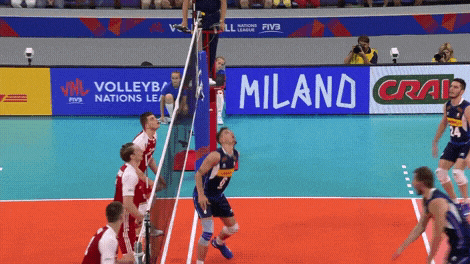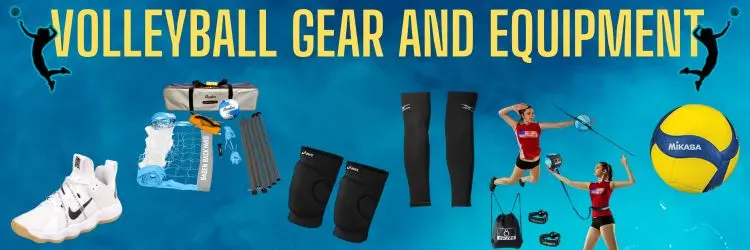Volleyball Rules for Ball Contact

Volleyball Rules for Ball Contact: A Guide to Legal and Illegal Ball Contact
Volleyball players need to make precise ball contacts to keep the game in play. Understanding the rules surrounding ball contact is crucial for players, referees and fans alike. The Federation Internationale de Volleyball (FIVB), USA Volleyball (USAV) and other governing bodies have established clear rules regarding how players can legally interact with the ball.
This guide will break down the essential rules for legal and illegal ball contacts in volleyball.
Understanding Ball Contact in Volleyball
Ball contact in volleyball refers to any instance where a player touches the ball during play. Players use different parts of their bodies to pass, set, attack, or block the ball. However, not all contacts are legal. The rules dictate how a player may touch the ball, the number of contacts allowed per team and the type of ball handling errors that may be penalized.
Legal Ball Contacts
For a ball contact to be legal, it must follow specific rules regarding how the ball is hit, how long it is touched, and the intention behind the contact. Here are the key points defining legal ball contact:
Clean Hits
- Players must make clean contact with the ball, meaning the ball cannot be caught, thrown, or held.
- The ball should rebound immediately upon contact without prolonged touch.
Body Contact
- Players can touch the ball with any part of their body, including hands, arms, chest and even legs or feet, as long as the contact is clean.
- Kicking the ball is allowed, provided it follows the rules of clean contact.
Double Contact Exceptions
- A player can legally make consecutive contacts if they occur during a single motion (such as a block or a hard driven ball defense).
- A player setting the ball must ensure both hands contact the ball simultaneously to avoid a double touch violation.
Three Touch Rule
- Each team is allowed a maximum of three contacts before returning the ball over the net.
- A block does not count as one of these three contacts.
Ball Rolling Over the Body
- If the ball briefly rolls over the player’s body but does not result in prolonged contact, it is legal.
Illegal Ball Contacts
An illegal ball contact occurs when a player mishandles the ball or violates the established contact rules. Here are the most common types of illegal ball contact:
Held Ball (Lift or Carry)
- A ball that is caught, thrown, or lifted instead of being cleanly hit is considered illegal.
- This is often called when a player’s hands are under the ball for too long, usually during an attempted set or pass.
Double Contact Violation
- A player cannot hit the ball twice in succession, except in specific cases (e.g. a block or a first contact off a hard driven ball).
- This violation often occurs during setting when the ball does not leave the hands cleanly.
Prolonged Contact
- The ball must not come to rest on any part of the body.
- If the ball appears to pause momentarily in the player’s hands or arms before being released, it is considered prolonged contact and is illegal.
Four Hits Violation
- If a team makes four consecutive contacts before sending the ball over the net, it results in a violation.
- Even accidental fourth touches count as illegal.
Illegal Attack Hit
- A back row player cannot attack the ball from in front of the 10 foot line if their hand is above the net at the moment of contact.
- A libero (defensive specialist) cannot complete an attack hit if the ball is above the net height.
Blocking Violations
- A player cannot reach over the net and block an opponent’s set unless the ball has entered the plane of the net.
- Back row players are not allowed to participate in front row blocking.
Touching the Net During Ball Contact
- Players cannot touch the net while making a play on the ball.
- Incidental contact with the net that does not interfere with play is usually not called as a violation.
Special Cases of Ball Contact
First Ball Contact Rules
- On the first contact after a serve or attack, players are allowed a slight double contact if the ball is played cleanly.
- This often applies to defensive plays where the ball rebounds off multiple body parts in a single action.
Blocker’s Contact
- A blocker may touch the ball as part of a block, and this does not count as one of the three team contacts.
- If the blocker makes consecutive touches after blocking, it results in a violation unless another player has touched the ball first.
Defensive Reactions to Hard Driven Balls
- When defending against a hard spike, a player may double contact the ball as long as it is part of a single defensive motion.
- This exception does not apply to soft attacks or tips.
Enforcing Ball Contact Rules
Role of the Referees
- The first referee has the primary responsibility of judging ball contacts and ensuring fair play.
- The second referee assists in watching for infractions, especially on the setter’s hands and net contacts.
Using Technology in Modern Volleyball
- In professional and international play, video review systems help verify controversial ball contact violations.
- Slow motion replays can determine if a ball was lifted, held, or double contacted.
Tips for Avoiding Illegal Ball Contacts
- Practice Clean Ball Handling – Work on setting and passing with quick, controlled movements to avoid double touches or lifts.
- Improve Defensive Reactions – Train to receive hard driven balls with soft, controlled touches instead of prolonged contact.
- Understand Back Row Attack Rules – Ensure that back row players do not attack from above the net in the front zone.
- Develop Proper Blocking Techniques – Learn when and how to legally block without interfering with the opponent’s play.
- Stay Disciplined on Net Contact – Avoid unnecessary net touches that could lead to violations.
Conclusion
Understanding and following volleyball’s rules for ball contact is essential for fair play and skill development. Legal ball contacts ensure smooth gameplay, while illegal contacts can result in penalties that disrupt team momentum.
By practicing clean ball handling techniques and staying aware of the rules, players can minimize errors and improve their performance on the court. Whether you are a beginner or an advanced player, mastering ball contact rules is key to excelling in volleyball.


